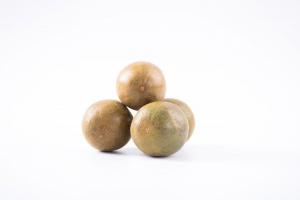Introduction
A peach tree is a fruit-bearing tree that is native to Northwest China. It belongs to the Rosaceae family and the Prunus genus. In this article, we will take a closer look at what kind of plant is a peach tree.
Growth characteristics
A peach tree can grow up to 15-25 feet tall and 10-20 feet wide. It has a fast growth rate and a relatively short lifespan of about 12-15 years. The tree has a deep root system and prefers well-drained soil with a pH range of 6-7. It can tolerate cold temperatures during the dormant season but requires warm temperatures during the growing season.
Physical characteristics
A peach tree has dark green leaves that are between 2-6 inches long and 0.5-2 inches wide. The leaves are lance-shaped with a pointed end and a toothed margin. The tree produces pink flowers in early spring before the leaves emerge. The flowers have a five-petal structure and are solitary or arranged in clusters of two or three. The fruit of a peach tree is a drupe, which is a fleshy fruit with a hard shell enclosing a seed.
Types of peach trees
There are two types of peach trees: clingstone and freestone. Clingstone peaches have flesh that sticks to the pit, while freestone peaches have flesh that separates easily from the pit. Within each type, there are many varieties of peach trees that differ in terms of size, color, flavor, and ripening time. Some popular varieties of clingstone peaches include Red Haven, Elberta, and Hale Haven, while some popular varieties of freestone peaches include Cresthaven, O'Henry, and Red Top.
Cultivation and care
A peach tree requires full sun exposure for at least six hours a day to produce a good crop. It also requires regular watering, especially during the growing season. The tree should be pruned annually to remove dead or diseased wood and to shape the tree for optimal fruit production. Peach trees are susceptible to many diseases and pests, including peach leaf curl, brown rot, and Oriental fruit moth. Proper care and management can help prevent these problems.
Nutritional benefits
Peaches are a good source of vitamins A and C, potassium, fiber, and antioxidants. They are also low in calories and fat. Eating peaches can improve digestion, boost immunity, and reduce the risk of chronic diseases such as cancer and heart disease. The leaves and bark of a peach tree are also used in traditional medicine for their anti-inflammatory and anti-tumor properties.
Conclusion
A peach tree is a fruit-bearing tree that is known for its delicious and nutritious fruit. It is relatively easy to grow and requires proper care and management to produce a good crop. With its many varieties and health benefits, a peach tree is a great addition to any garden or orchard.

 how many times do yo...
how many times do yo... how many planted tre...
how many planted tre... how many pine trees ...
how many pine trees ... how many pecan trees...
how many pecan trees... how many plants comp...
how many plants comp... how many plants can ...
how many plants can ... how many plants and ...
how many plants and ... how many pepper plan...
how many pepper plan...

































